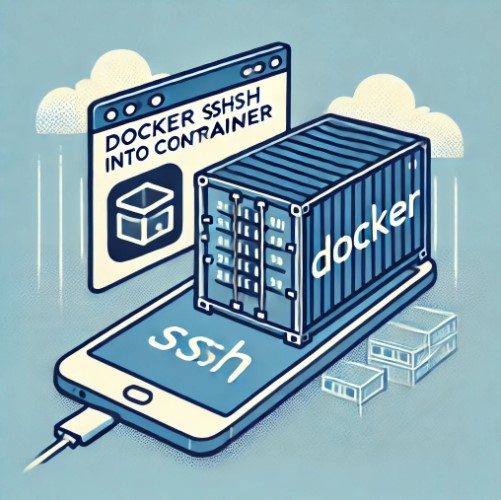Table of Contents
Introduction
Docker containers have revolutionized the way developers build, ship, and manage applications. However, one common question arises: How do you Docker SSH into Container? While Docker doesn’t support traditional SSH access like physical servers, it provides a powerful alternative with the docker exec command. In this guide, we’ll explore step-by-step instructions on how to “SSH” into Docker containers from basic operations to more advanced use cases.
What is Docker SSH into Container?
Before diving into the practical steps, it’s important to clarify that Docker doesn’t actually use SSH for container access. Instead, Docker uses the docker exec command, which allows you to run commands or get an interactive shell inside running containers. This method is more efficient, secure, and tailored for containers than traditional SSH.
Why You Shouldn’t Use SSH for Docker Containers
- Containers are lightweight: Adding an SSH server increases container size.
- Docker has built-in tools: Using
docker execprovides direct and simple access to containers without the overhead of SSH configuration. - Security: Running an SSH service in every container increases the attack surface. Docker’s approach with
docker execis more secure.
How to SSH into a Docker Container: Basic Method
Let’s start with the basics – getting into the shell of a running Docker container.
Step 1: List Running Containers
To view the currently running containers, you can use the following command:
docker psThis command will display:
- CONTAINER ID: Unique ID for each running container
- IMAGE: The Docker image used to create the container
- COMMAND: The main process running in the container
- STATUS: Whether the container is running, paused, or stopped
- NAMES: Friendly names assigned to containers for easy identification
Step 2: Access the Shell of a Running Container
Once you have the container ID or name, you can use the docker exec command to access the container’s bash shell. For example:
docker exec -it <container_ID_or_name> /bin/bash-i: Keep STDIN open even if not attached.-t: Allocate a pseudo-TTY, allowing you to interact with the container.
If your container uses a different shell, such as sh, replace /bin/bash with the appropriate shell path.
Advanced Docker Exec Usage
Once you’ve mastered the basics, you can use the docker exec command for more advanced tasks. Let’s look at some examples.
Running Commands in a Docker Container
You don’t always need to access a full shell; sometimes you just need to run a single command. You can do this using the docker exec command, followed by the command you want to execute. For example, to check the /etc/hosts file inside a container:
docker exec -it <container_ID_or_name> cat /etc/hostsInspect Container Configuration
To view detailed information about a container, such as its environment variables, network settings, and mounted volumes, use:
docker inspect <container_ID_or_name>This is helpful when you need to troubleshoot or validate container configurations.
How to SSH into Stopped or Exited Containers
You can only run the docker exec command on running containers. If your container has stopped or exited, you need to start it before you can access it. Here’s how:
- List all containers (including stopped ones):
docker ps -a- Start a stopped container:
docker start <container_ID_or_name>- SSH into the container using the previously mentioned
docker execcommand.
Automating Docker SSH Access
For users who frequently need to access containers, creating a function in your .bashrc or .zshrc file can streamline the process:
function docker_ssh() {
docker exec -it $1 /bin/bash
}This allows you to use a simpler command like docker_ssh <container_ID_or_name>.
Frequently Asked Questions (FAQs)
1. Can I install SSH in a Docker container?
Yes, you can install SSH in a Docker container, but it’s generally discouraged. Adding SSH increases the container’s size and complexity. Using docker exec is the recommended way to access containers.
2. How do I copy files between my host machine and Docker containers?
You can use the docker cp command to copy files from your host to the container or vice versa. For example:
docker cp <source_path> <container_ID_or_name>:<destination_path>3. How can I access Docker containers with graphical applications?
Docker containers can run graphical applications using X11 forwarding, but this setup requires additional configuration beyond simple terminal access.
4. What happens if I stop a container after SSHing into it?
If you stop a container while you’re connected using docker exec, your session will end immediately. You must restart the container to regain access.
Advanced Topics: Managing Multiple Containers
In environments with many running containers, it’s essential to efficiently manage them. Here are a few strategies:
Using Docker Compose for Multi-Container Applications
If you are running multiple containers, Docker Compose is a valuable tool. It allows you to define and manage multi-container applications with a simple YAML configuration file. To install and use Docker Compose:
sudo apt-get install docker-compose
docker-compose upWith Docker Compose, you can specify the configuration for all containers in one place, making it easier to scale, start, and stop services together.
Handling Docker Networks
Managing container networks is crucial, especially for multi-container applications. Docker provides default networking, but you can create custom networks for better isolation and performance.
- List networks:
docker network ls - Create a new network:
docker network create my_network - Run a container on a network:
docker run --network my_network <image>

Conclusion
Accessing a Docker container’s shell or executing commands inside it is made simple with the docker exec command. This guide covered everything from basic shell access to running advanced commands and managing multiple containers. Docker’s flexibility allows you to streamline container management without the need for traditional SSH. Thank you for reading the DevopsRoles page!


Helpful me! Thanks